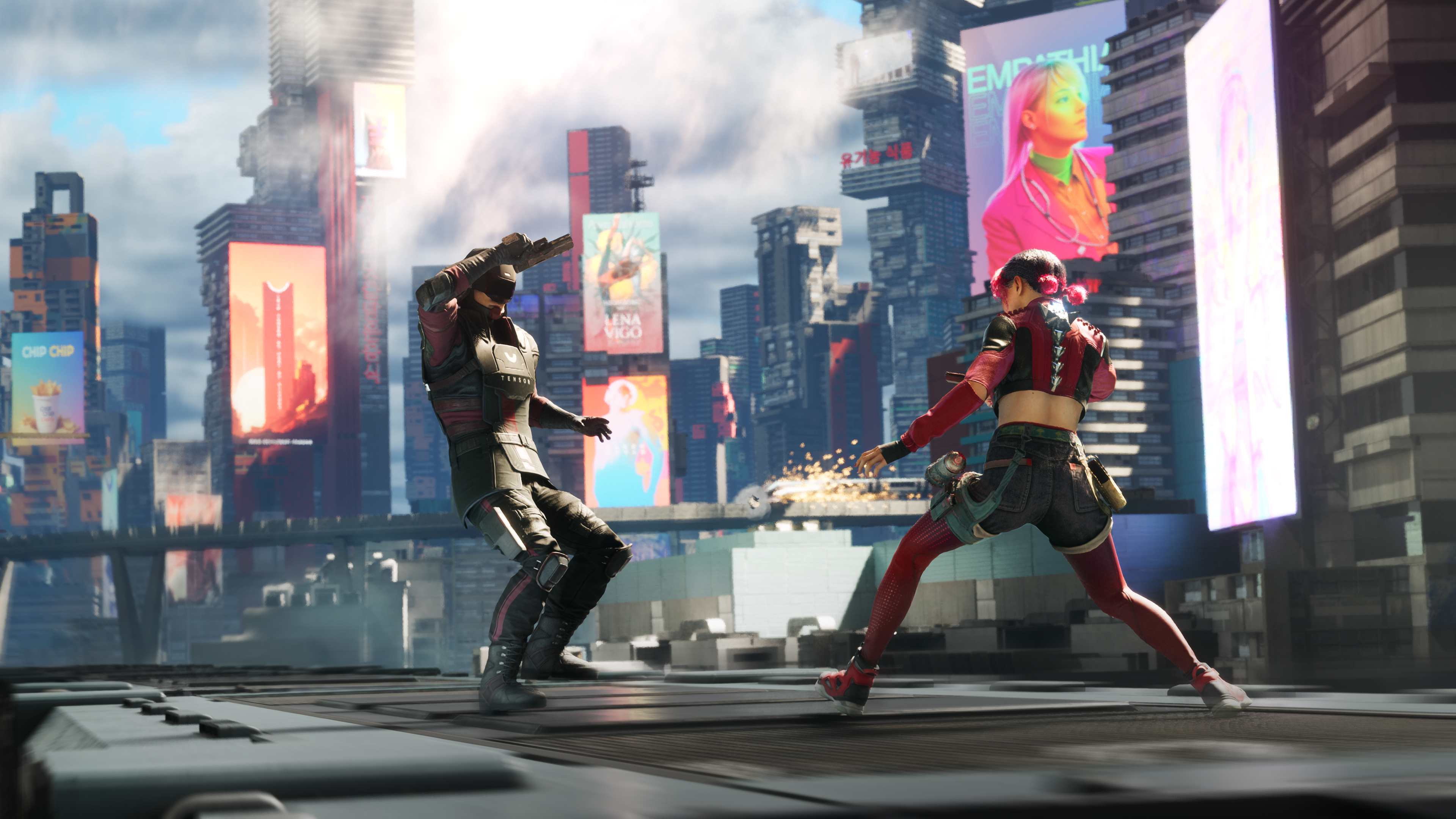Creating SPINE's cinematic gameplay is like making an "action movie within a game"
We already discovered how the new action game SPINE is making great use of Unreal Engine 5 to bring its vibrant anime world to life, but there's some genius new tech being created for Nekki's new game too. The team is working on its own dynamic camera system that aims to make every player action in the game feel unique, forceful and crunchy.
In my interview below Game Director Dmitry Pimenov shares how the approach is akin to making an "action movie within a game", enabling players to curate and direct their own John Wick action scenes by simply playing the game.
It's a novel approach but hardly unexpected from a developer keen to push the boundaries, whether that's by telling new transmedia stories or devising new ways to use Unreal Engine 5.

CB: What core experience were you aiming to deliver to players, and how did the dynamic camera play into that?
Dmitry Pimenov: From the very beginning of the project, we set out to reimagine what 'cinematic action' can mean in games. It's common for cinematic games to be criticised for relying too heavily on cutscenes and quick-time events (QTEs). We wanted to challenge that convention by pushing the boundaries wherever possible.
Our philosophy is simple: if something exciting is happening on screen, we aim to make it part of the gameplay rather than a passive cutscene. For example, if characters are fighting on a train rooftop, we want that moment to be fully playable, not just a cutscene. A version of this scene was featured in one of our early trailers, showcasing our approach.
As directors of an 'action movie within a game', we embrace bold camera choices, including the use of pre-set cameras in certain scenes. Many of these decisions are inspired by iconic moments from classic action films, but the most important feature we are committed to implementing is what we call an 'intellectual camera system'.
When I look at action games today, it often seems that the highest compliment you can give a camera system is, “I didn’t notice the camera; it didn’t distract me from the gameplay". To me, that’s a bit disappointing. Camera systems in action games deserve more attention!
In SPINE, we don’t want to settle for that. Our goal is to push the concept further, so players will say, "The camerawork in this game is outstanding," the way they might with a movie.
Our 'intellectual camera system' is an algorithm designed to always try to find the perfect angles for the action on screen. It takes into account factors like potential collisions with walls, etc, while prioritising important 'combat information' – for example, selecting a shoulder that shows the most of the player's opponents.
CB: What have been the biggest challenges in implementing this feature?
Dmitry Pimenov: The main challenge lies in finding the balance between convenience and cinematography. For the camera work, we’ve collaborated with a director of photography from the film industry, who has taught us many valuable techniques – small but impactful tricks that we’ve either implemented or keep in mind.
For instance, we’ve incorporated into the game the idea that a real-life camera is a physical object with its own inertia, and that action scenes in movies are often shot at eye level or lower, because it’s difficult for a cameraman to raise the camera above their head. We aim to capture that realistic camera movement, understanding that real movie cameras introduce subtle "errors" that bring life to the shot. These include constant movement and a breathing parallax effect, which we plan to mocap.
Another key consideration is that in movies, the camera typically stays close to the character, but in beat 'em up games, players often prefer a more distant view to see everything happening on screen. Ultimately, it all comes down to selecting the right variables: What field of view (FOV) do we use? How do we adjust it dynamically? How long do we take control away from the player during finishing moves? What angle best showcases a character's action, like how we show Redline delivering a kick to her opponent (we prefer a slight angle that highlights the action)?
Our camera system has become quite sophisticated, and a lot of the design work happens in these fine adjustments, all aimed at finding the perfect balance between comfort and cinematic quality.
CB: Were there any specific games, films, or other forms of media that influenced the way you approached the use of camera movement in SPINE?
Dmitry Pimenov: Absolutely! Nothing beats the camerawork in Uncharted 4, especially during the prison fight scene. In fact, that very fight was one of the key inspirations behind our 'intellectual camera' feature in SPINE.
I also think that, for example, Sifu does a great job of capturing the essence of kung fu movies. I particularly appreciate some of the finishers in that game.
Big-budget games from PlayStation Studios also pay close attention to camerawork, with Insomniac’s work on Marvel’s Spider-Man being a prime example. They use some impressive techniques, like adjusting the FOV/zoom and applying post-effects, which really enhance the experience. I’ve heard they decided against implementing 'paired takedowns' of enemies – well, good news for SPINE players: we’ll have them!
CB: How did you ensure that the camera enhanced the experience without disorienting or frustrating players?
Dmitry Pimenov: We understand that some players prefer complete control over the in-game camera. That’s why we allow players to override our systems at any time. The moment you move the right stick, the camera controls are entirely in your hands, and you can adjust the angles however you like. However, our goal is for players to feel so engaged with our camera system that they won’t feel the need to take control.
Our internal play tests have shown that 90% of players are satisfied with the camerawork and don’t experience frustration (excluding some bugs, which are expected at this stage of SPINE development). All the gameplay scenes featured in our gameplay trailers were recorded without touching the right stick.
CB: How did using Unreal Engine 5 enable the camera to be implemented?
Dmitry Pimenov: When we first started working on the camera system, we only had a rough idea of the features we wanted. The rest has come through continuous iteration. New ideas emerge, we test them, refine them, customise them, and sometimes even completely redesign them.
Different situations in the game require different approaches – for example, the camera behaviour for a boss fight is different from how it works with a group of five regular enemies, and there are various preset cameras for specific moments.
As a result, we don’t rely heavily on the default Unreal Engine 5 camera algorithms. However, the Blueprint system has been incredibly helpful in supporting our iterative development process.
Not only are Blueprints easy to learn, making them accessible for different team members to experiment with and customise, but they also enable the creation of complex and sophisticated systems. Overall, we can confidently say that adopting Unreal Engine 5 has been a highly successful decision for our studio.
Inspired by the work Nekki is doing on SPINE? We have the info to help you get started in game development too. Read our guides to the best 3D modelling software and the best laptops for game development.
Daily design news, reviews, how-tos and more, as picked by the editors.

Ian Dean is Editor, Digital Arts & 3D at Creative Bloq, and the former editor of many leading magazines. These titles included ImagineFX, 3D World and video game titles Play and Official PlayStation Magazine. Ian launched Xbox magazine X360 and edited PlayStation World. For Creative Bloq, Ian combines his experiences to bring the latest news on digital art, VFX and video games and tech, and in his spare time he doodles in Procreate, ArtRage, and Rebelle while finding time to play Xbox and PS5.
